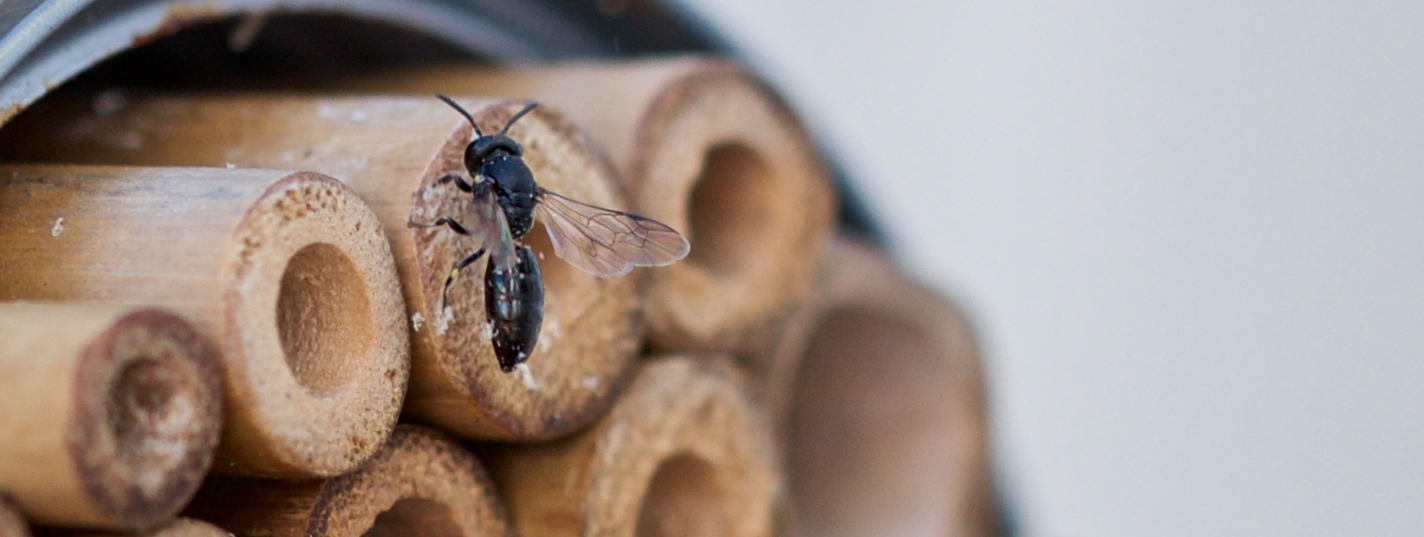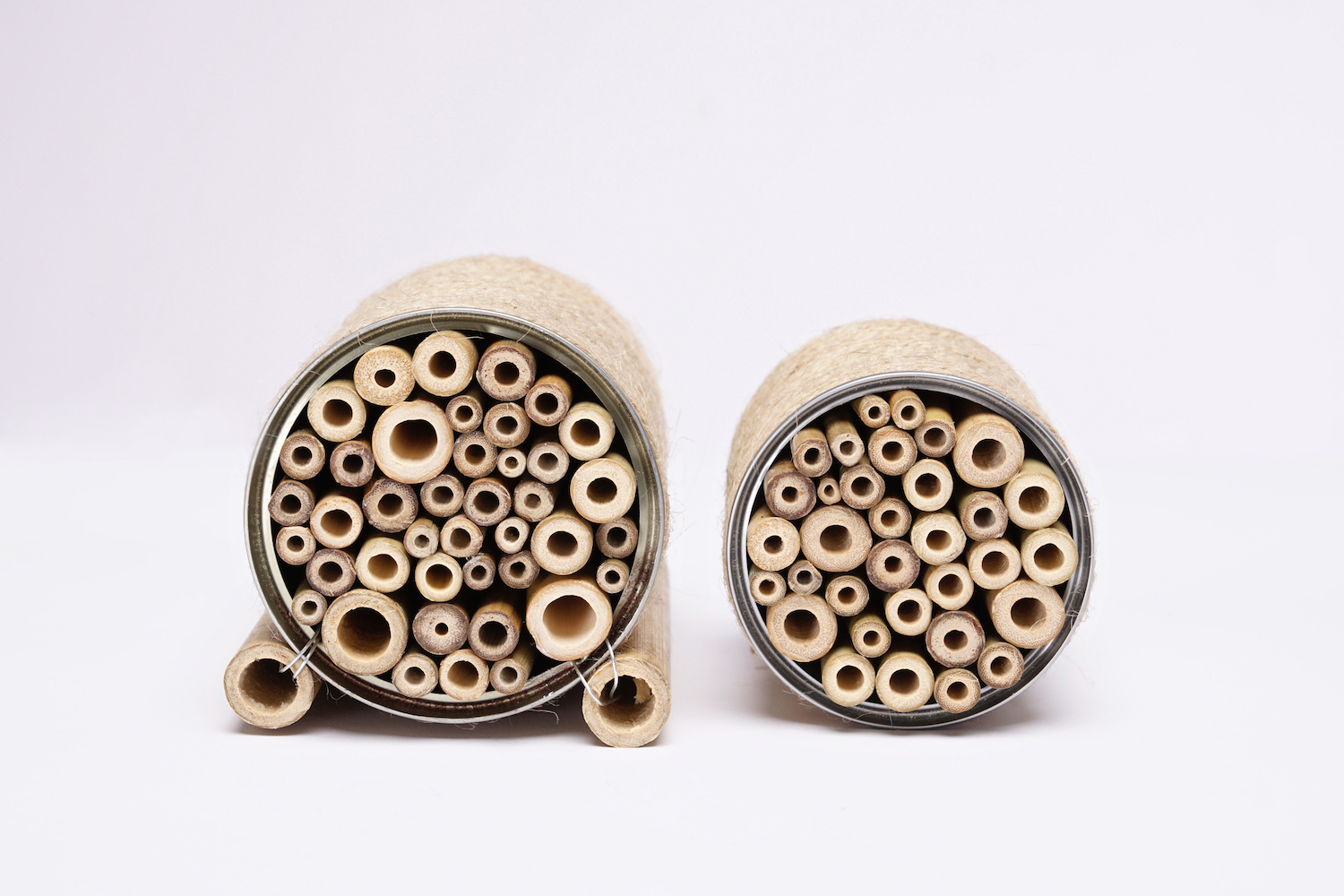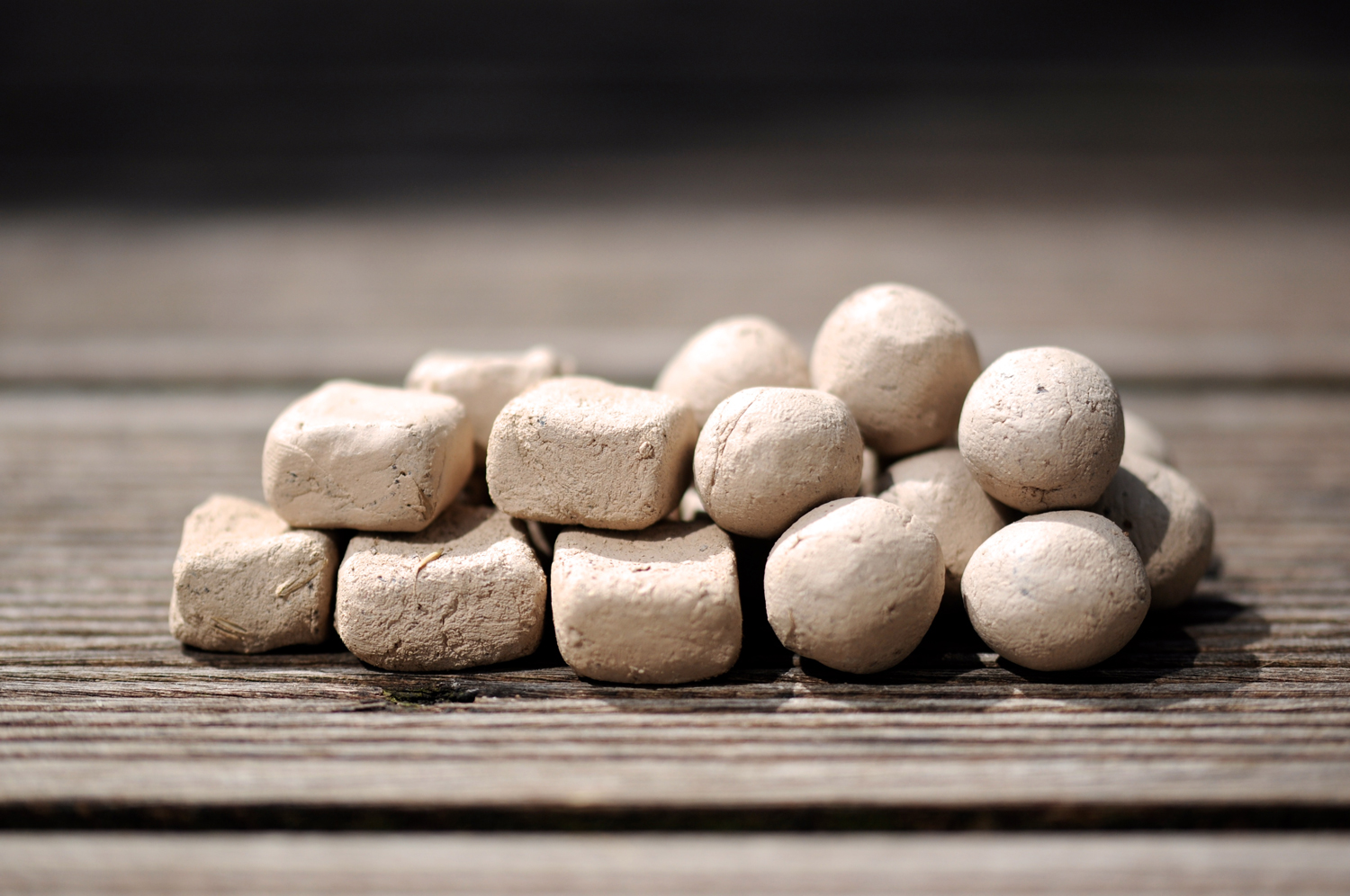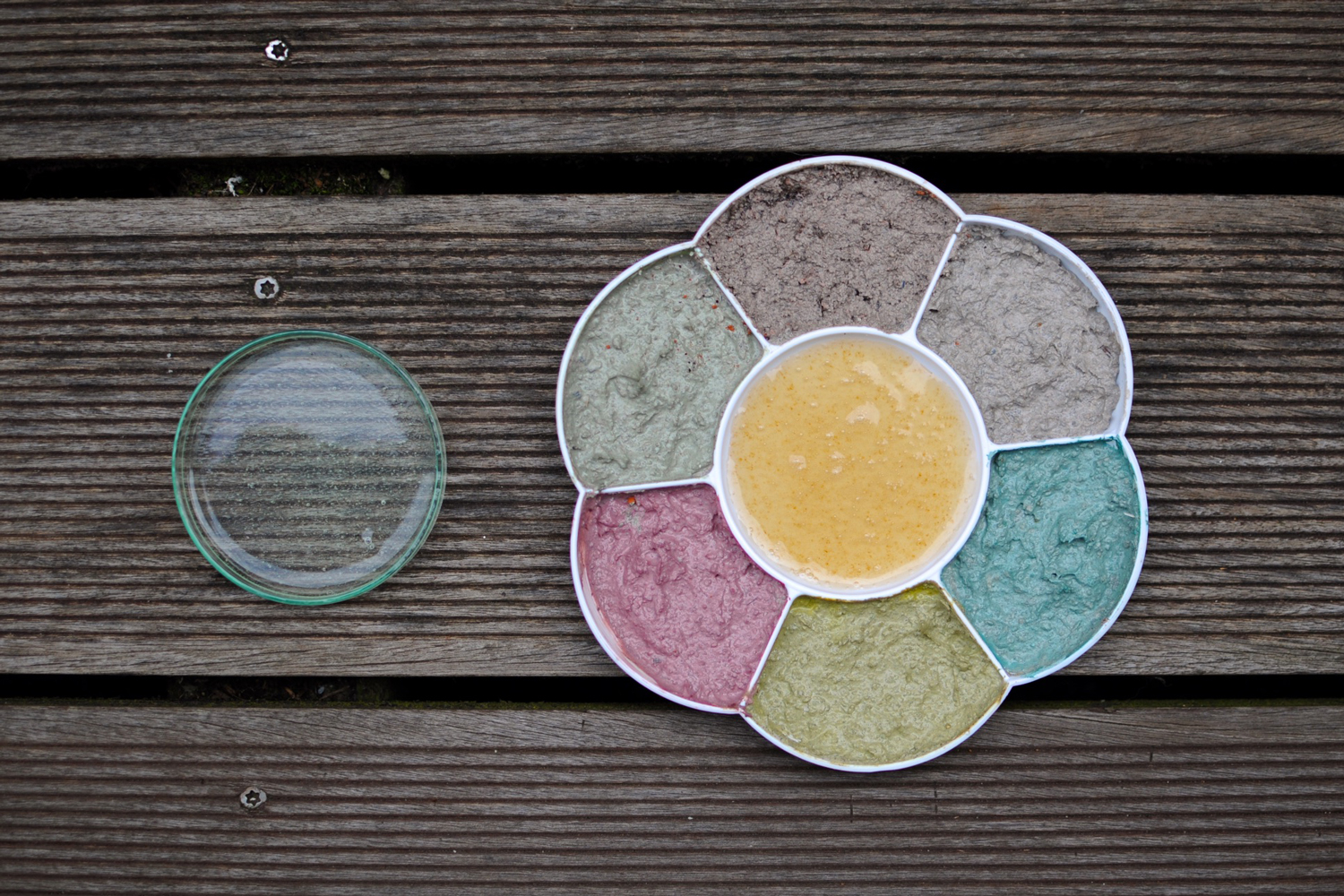Experiments on Functional Requirements

The first set of experiments aimed at clarifying the functional requirements of the intended urban nesting interventions. Wild bees have different specific requirements concerning their nests and many of them, especially those living in loose soil in the ground, depend on specific material mixtures and consistencies. Manmade nesting aids therefore usually can only be used by a fraction of wild bees that are less selective [1]. Those bees still tend to occur more often than the more specialized kinds, which means that artificial nesting aids usually do not have a direct effect on protecting endangered wild bees. Even so, nesting aids can help raising awareness of wild bees and can be a first step to bring their needs into our conscience.
Bees that nest in existing cavities are the easiest to please with artificial nests [1]. Those bees build their brood cells in empty, horizontal holes in different materials, such as holed bamboo stems, natural tubes or cavities in hardwood. These holes should be closed off at the end and clear of splinters and cracks. Since wild bees come in many different sizes, they require different hole diameters. This diameter is determined by the female bee's head's width, which, for cavity nesting bees, is between 2 and 9 mm. Furthermore, the hole should be at least around ten times deeper than its diameter, and the material it is in needs to be permeable to air to prevent mold.
Since wild bees have to fly back and forth between nest and the plants that they need to collect pollen, a close proximity to such plants increases the chance that a nesting aid will be found and inhabited. A sufficient amount of native flowering plants in the surroundings of the nest is a must for bees to live in an area.
JUMP TO: Canned Bees | Seed Bombs | Colored Clay
Experiment #1 - Canned Bees

The first experiment was to build and mount a simple nesting aid consisting of bamboo tubes in an empty can on an inner-city balcony, testing whether wild bees could successfully be attracted and hosted in such urban settings. To increase the chances to attract wild bees in the city, three different flower seed mixtures said to suppord wild bees were sown on the balcony as well.
RESEARCH QUESTION
Can wild bees be attracted and hosted on a 4th story south-side balcony in the inner cities of Bremen and Würzburg?
MATERIAL
Empty cans, bamboo stems, spackle, coconut cord, wire.
PROCEDURE
Fill the can with clean hollowed stems cut to the right size. Mount on the balcony in a spot protected from wind and rain and plant bee-friendly flowers.
OBSERVATION
Rarely any bees spotted during summer 2017 in Bremen. Meanwhile, same kind of bee can was rapidly populated on a balcony in Würzburg. End of July first wild inhabitant in Bremen.
CONCLUSION
Generally possible, but the rainy weather and possibly the strong winds plus the larger distance to other flowers at this height seems to decrease the chance of inhabitation by bees.

Experiment #2 - Bee-Friendly Seed Bombs

Since wild bees depend on native flowering plants to collect pollen for their offspring, homemade Seed Bombs, small balls of loam and, in this case, bee-friendly flower seeds, were tested in the second experiment. For testing purposes, I also made a Seed Bomb variation with grass seeds, since grass tends to germinate rather quickly.
RESEARCH QUESTION
Do fully dried Seed Bombs germinate in normal weather conditions?
MATERIAL
Clay, soil, flower and grass seeds.
PROCEDURE
Form Seed Bombs with flower and with grass seeds, let dry, place in a location with regular weather conditions (balcony).
OBSERVATION
Seed Bombs start germinating after a few weeks; the more soil was added to the mixture, the easier they fall apart when soaked by the rain.
CONCLUSION
Fully dried Seed Bombs do germinate in natural weather conditions; more soil in the mixture speeds up the process.
Experiment #3 - Colored Clay

The third experiment addresses the issue of a possible lack of nest building materials in cities. Many cavity-nesting bees collect naturally occuring materials such as loam and plant parts around the nest to coat the insides of their brood cells and to close off the nest in the end. While ideally the future bee-inhabited city would be full of plants, loam could be more difficult to find in an entirely urban setting. Therefore, I decided to offer the bees some loam next to the nesting aids on the balconies to see whether they would accept artificially offered building materials. To make the inhabitation of a tube more visible to humans, I also offered the bees some loam mixed with sugar-based food coloring.
RESEARCH QUESTION
Do wild bees accept artificially offered clay mixtures for their nest building purposes? Do they mind colorful clay?
MATERIAL
Clay, soil, water, sugar based food coloring.
PROCEDURE
Mix clay with soil, water, and some parts with food coloring; fill in small bowls and place them near a nesting site.
OBSERVATION
Not enough bee-activity in Bremen; in Würzburg no bees used loam for nest building after the start of the experiment.
CONCLUSION
Experiment not concluded; but it seems likely they would accept colored clay with natural ingredients if no other clay or loam can be found close-by.
References
[1] WESTRICH, P. Wildbienen - Die anderen Bienen. München: Verlag Dr. Friedrich Pfeil, 2015.